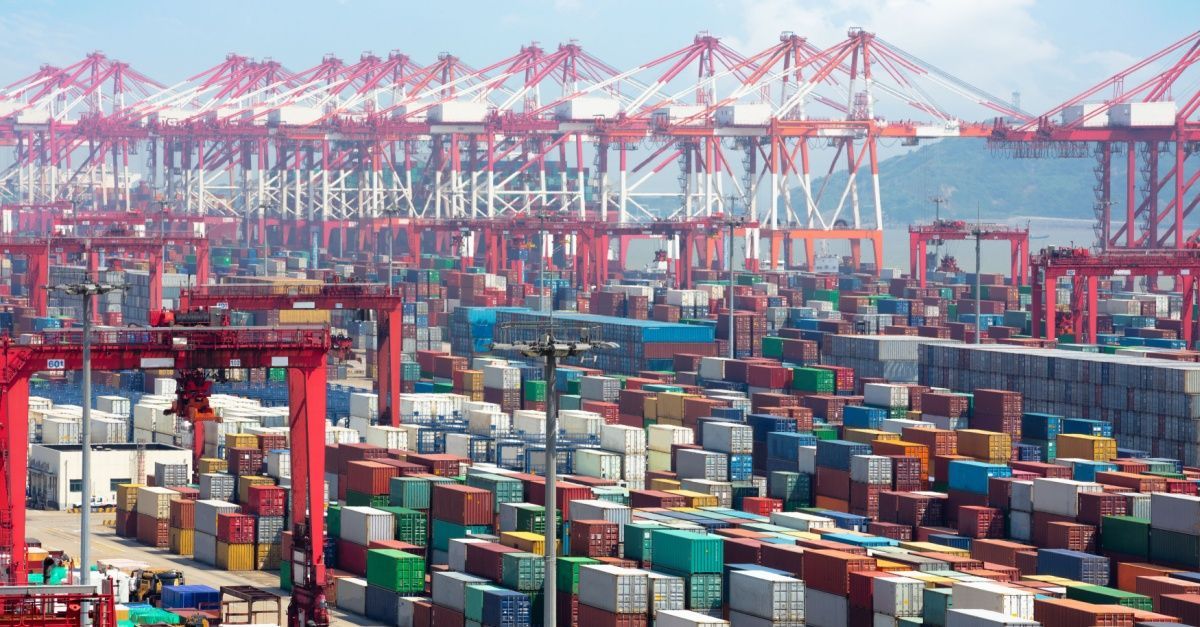Shipping Climate or Temperature-Controlled Freight: Why the Details Matter
Blog Post CTA
Shipping Climate or Temperature-Controlled Freight: Why the Details Matter
The ability to find carriers offering climate-controlled freight transportation options is vital for any shipper that routinely deals with cold freight loads. With this high demand and specialized shipping service comes an increased expense that shippers must consider when planning routes and taking on capacity. According to DAT Freight & Analysis, national reefer rates can vary greatly depending on location, transportation route, shipping distance, time of year, and other factors that can change frequently. Current rates for refrigerated shipping range from around $2.80 to nearly $3.75. However, the rates vary by week; therefore, shippers should check often to ensure accurately budgeting for this expense. Securing reliable temperature-controlled freight shipping requires careful planning and coordination with carriers and customers across all the shipping modes.
What Is Temperature-Controlled Freight?
Temperature or climate-controlled freight shipping refers to the specialized movement of goods that require specialized handling due to temperature and climate sensitivities. An item that can spoil or be damaged due to high or low temperatures is considered climate-sensitive freight and needs to be transported by reefer (refrigerated) trucks. This is possible with temperature-controlled storage and refrigerated trucking. With perishable freight, the more sensitive the freight is to temperature changes, the greater its impact on the overall shipping costs for that load. There are different rates for cooled, chilled, and frozen shipments because each type requires different cooling systems, packing, storage, and transportation considerations.
It can also impact delivery routes as local temperatures have to be accounted for to protect the loads. Any stops along the way for transfer to other refrigerated trucks need to be carefully considered as well. Shipping and receiving points should have temperature-controlled docks to ensure the freight remains stable during the transfer. Reefer rates will reflect these necessary precautions and amenities and will likely be higher than typical dry van freight transport rates for a load of the same size or weight. For reasons such as these, temperature-controlled freight shipping requires strict attention to detail, from start to finish.
Common Types of Temperature Controlled Freight
Temperature-controlled shipping options are not just a summertime commodity but are rather a year-round requirement for some commodities. A wide range of freight will need temperature-controlled freight shipping services, including:
- Food – fresh fruits and vegetables, flowers, herbs, and meats
- Confectionary Products – candy, sugar, chocolates, and baked goods
- Health & Beauty – certain makeups, hygiene products, soaps, and lotions
- Nutritional Supplements – vitamins, shakes, snacks, and syrups
- Frozen Foods – dinners, meats, and ready-to-prepare foods
- Medical/ Pharmaceuticals – pills, vaccines, lab kits, test products, and some equipment
- Live Animals – livestock, poultry, pets, exotics, and even insects
While there are, of course, certain times of the year when climate-controlled freight shipping is in higher demand—for instance, foods and frozen goods around the holidays—there are products that will always need climate-specific transportation. Such as when moving livestock will always need to be moved to and from local farms. Medications and vaccines will always need to be shipped to medical centers, though global situations can cause a spike in demand as was seen with COVID-19. Health and wellness items will always be sought after by people who want to improve their quality of life and overall health. There will always be a need to get cold freight from Point A to Point B.
Top Risks in Climate Controlled Freight
Two dominating factors make refrigerated trucks unique among other fleet trucks. First, the insulating walls needed inside to shield against outside temperatures can significantly reduce the available space inside the truck compared to other dry haul trucks. The second factor applies to the overall payload capacity of reefer trucks is also reduced because of the additional weight of the refrigeration system. Despite these limitations, climate-controlled freight transportation remains in high demand. As highlighted by Road Scholar Transport: “According to projections, the global cold chain logistics market will likely grow at a 17.9% compound annual growth rate through 2026. The market value is predicted to reach $585,105.6 million in that time…The cold chain transport industry faces major risks and challenges. Such risks can have disastrous consequences.” Here are some of those risks:
1. Inadequate Documentation Leaves Room for Error
Poor tracking of shipping lists and specifications can lead to improper loading and handling and damaged or ruined goods upon arrival at the final destination.
2. Delays and Disruptions Add to Risk of Damages
Poor planning and predictive analysis of weather, traffic, and other factors can cause delays and disruptions that push cold freight loads past approved delivery windows.
3. Changing Global Regulations Bring Additional Pressure
Failure to keep up with local and national guidelines and requirements for temperature-controlled freight
transportation can cause significant problems for shippers.
4. Limited Refrigerated Units and Tight Capacity
Failure to vet carriers properly and maintain an access list of climate-controlled freight approved carriers can significantly impact cold freight transportation capacity.
5. Power Issues and Climate Control Problems
Reefer trucks need to be maintained appropriately and require specialized repairs and regularly scheduled service to keep them working optimally.
6. Packaging Issues That Put Items at Risk of Damages
Poor packing and loading of cold freight can impact temperature fluctuations within the packaging and how well freight survives shipping.
7. Fluctuating Temperature Ranges in Reefer Trucks
Poor monitoring systems inside the refrigeration trucks can lead to high and low temperatures falling outside what is acceptable for a particular load.
8. Excessive Ambient and Outdoor Temperatures
Even with onboard refrigeration and climate control, shippers and carriers must monitor local weather and temperature highs and adjust cooling levels as needed during shipping.
9. Poor Logistical Planning and Communications
Climate-controlled freight logistics rely heavily on strong and clear communications supported by real-time data and team members who have on-demand access.
10. Inexperienced Carriers Put Loads at Risk
Choosing inexperienced and underqualified carriers can jeopardize temperature-controlled freight
transportation loads, even in the best of circumstances.
Reefer shipping will always find demand within the market, and the need for temperature-controlled freight transportation will never fully fade. Too many things that people have come to rely on are dependent on climate- and temperature-monitored transportation. Overcoming these common risks and addressing them proactively and efficiently will help ensure cold freight shipping keeps up with the growing demands of today’s market.
The Value of Accountability to Avoid Damage to Cold Freight
Building and maintaining a network that focuses on accountability and collaboration to avoid damages and maximize successful delivery rates is key to maintaining a competitive advantage in today’s cold-freight market. ProvisionerOnline points out that “mitigating risks to a cold chain is much larger than a shipper implementing internal processes. All parties involved in moving temperature-sensitive products—shippers, carriers, vendors, providers, etc.—need to understand the importance of maintaining a cold chain.” Some considerations to think about before choosing a temperature-controlled freight solution:
The acceptable temperature and humidity ranges while the freight is in transit and how it will be monitored and controlled.- The tolerable margin of error for the freight and the typical deviation in the temperature range within the trucks during transportation.
- Acceptable levels of risk in terms of weather, traffic, customs, or other delays and how much leeway there is in delivery and shipment timelines.
- Potential areas of risk that need to be monitored along the shipping lanes and specific touchpoint protocols that need to be enforced and who is enforcing them.
- Specific no-go actions, unacceptable conditions, and specific events may compromise the integrity of the product and that renders the shipment ruined.
Additional conditions for selecting temperature-controlled freight service providers should be based, but not limited to, the following criteria:
- Back-up systems available on the trucks and what emergency and fallback temperature controls are available.
- The layout of internal reefer cargo areas and how a product will be loaded to ensure even temperature and airflow in the truck.
- External temperature logging and data tracking, as well as internal monitoring for up-to-date status, reports at any time.
- Cargo placement for easy access during unloading to prevent damages to remaining cargo or shipments.
- Time and status of the last systems check of the climate-controlled freight system to ensure everything is in good working order.
Improve Access to Climate Controlled Freight With Entourage by Your Side
The ability of shippers to find reefer carriers offering specialized services and climate-controlled freight transportation opportunities is vital for the proper management of cold freight loads. The need for food, beverages, medicines, supplies, and products that require cold transport will always remain. Temperature-sensitive freight brings a unique set of supply chain risks for shippers and carriers alike. They can mitigate these risks by embracing innovative changes and improving temperature-controlled freight-sensitive cold chain logistics and operations. Contact Entourage Freight Solutions today to learn more about reefer services and how to improve cold-chain transportation.









